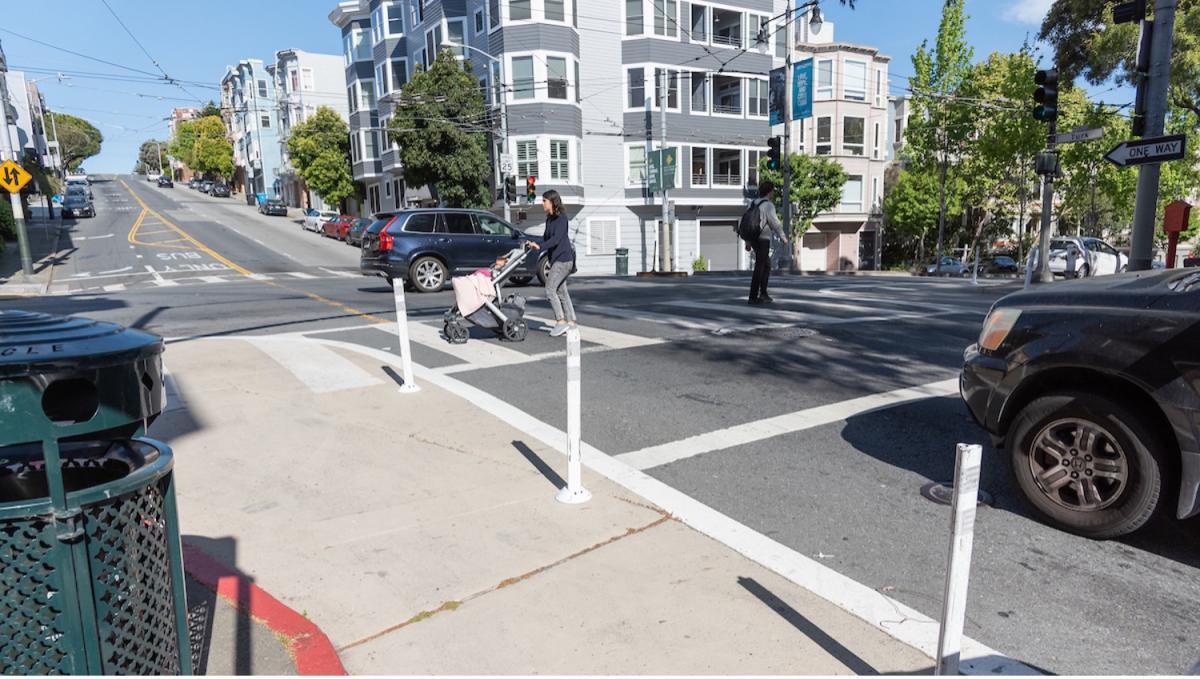
What are they?
Painted safety zones are painted road areas that wrap around sidewalk corners to make pedestrian crossing intersections more visible to people driving. Painted safety zones are often painted khaki and flanked by delineators (white plastic posts) to further reinforce that this area should be kept clear for visibility.
How do they work?
By encouraging drivers to turn further away from the curb, painted safety zones create a buffer between pedestrians and cars. They also encourage yielding, and slow drivers down considerably as they’re making turns. In 2016, SFMTA collected data from six painted safety zones around the city and found that driver speeds on turns decreased by up to 55%, the number of drivers who fully yielded to pedestrians at an intersection increased by an average of 25%, and the number of vehicles turning within six feet of the curb (the limit of what is considered a safe distance) decreased by an average of 35%.
Where to find Painted Safety Zones in San Francisco
- Polk Street: PSZs have been added along Polk as part of a larger streetscape improvement project; at the intersections of Union and McAllister, data has shown drivers turning within six feet of the curb declined by 12%.
- Geary Rapid Project: As part of a comprehensive transit and safety upgrade for Geary Boulevard, PSZs were added at intersections along the corridor to improve pedestrian safety.